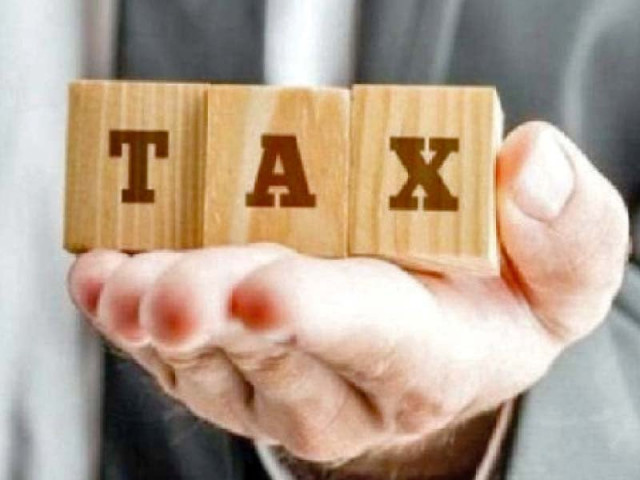To tax or not to tax
Skewed tax system is not likely to work but change will require a lot of effort

On February 20, while speaking on the sidelines of Munich Security Conference, IMF Managing Director Kristalina Georgieva said: “For Pakistan, I want to stress that we are emphasising two things: One, tax revenues - those who can, those making good money in public or private sector, need to contribute to the economy. Two, to have a fairer distribution of pressures, subsidies should be extended only towards the people who really need them.”
The statement actually reflects the major theme of the ongoing and all future extended fund facilities that Pakistan seems to be stuck with for at least next 10 years because of our already committed foreign financing needs.
However, if you ask an average Pakistani on the road, he will always complain of the unbearable burden of taxes but if we look at the aggregate numbers, Pakistan’s tax-to-GDP ratio is hovering around 10% for the last 20 years (current ratio is 8.5% only after 2021 rebasing of GDP). In other words, tax contribution by the whole of Pakistan through income tax, sales tax, federal excise, customs duty and provincial taxes, including sales tax on services, property tax, provincial excise, land taxes, agricultural taxes, etc, is Rs8.50 for every Rs100 of the value of goods and services produced in the country.
The ratio is almost half of the ratio of most of the other economies of similar size and level of development. The situation is even worse when we consider that our current data collection might be missing out a significant portion of our undocumented economy in the denominator. Its size is 36% of GDP, as per World Bank’s latest estimates.
Almost 90% of this collection comes from FBR taxes and the contribution by provinces remains a dismal 1% of the revenue effort, despite a reasonably good tax base of property, agricultural and services sales tax. The failure of the federation and provincial executives in levying and collecting a fair amount of taxes is largely discussed as a policy failure but a closer look at the data shows a completely different picture.
If we look at the FBR data of tax year 2021 income tax filing (which can be easily worked out from the tax directory published by the FBR), it appears that only 0.9% of filers are paying 66% of income tax.
It also shows that out of three million filers, 1.25 million (42%) are filing non-taxable or non-auditable incomes. The largest chunk of 1.7 million contribute only one-fifth of taxes. Another important fact is that withholding taxes of about Rs350 billion were not claimed in tax returns and hence people paying those taxes managed to remain outside of the filing process.
For over 40 years, the benchmark economic model of tax evasion has been the Allingham and Sandmo (1972) model, in which self-interested taxpayers choose how much income to report to the tax authority by trading off the benefits of evasion (lower tax payments) against the costs of evasion (the possibility of being caught and punished).
In this model, the key policy parameters affecting tax evasion are detection probability, and the certainty and severity of penalty conditional on the evasion being detected.
Although the model has been criticised a lot for its factual brazenness, yet it has worked successfully in all the countries which achieved significant tax-to-GDP ratios.
Our failure in this regard, both on the part of FBR and provinces, is largely a failure to create a perception in the mind of taxpayers about the high probability of being caught, if non-reporting or under-reporting one’s income.
Even if one is caught evading taxes, there is almost zero threat of penalties and consequences because of our frail and weak prosecution and appellate system. The so-called self-assessment becomes a legally binding order in force, and courts and legislature have made it almost impossible to dislodge the claim of a taxpayer.
As a result, our tax-to-GDP ratio is a paltry 8.5% of national income. Only three million people file returns and amongst them only 1.8 million pay some tax. Compare it with 85 million bank accounts, at least 30 million domestic electricity connections, four million shop connections and more than 300,000 high-voltage industrial connections, and you can estimate the size and magnitude of under-reporting and non-reporting.
Surely, one can put all the blame on FBR for this poor show but with an expenditure of 67 paisa per Rs100 of collection, a limited and aging core workforce, reluctance of people and polity to provide CNIC number in even business-to-business transaction, a huge currency in circulation which ranges from Rs6 to Rs9 trillion and with tons of gold and loads of dollars changing hands, there is absolutely no fear at all in the hearts and minds of people about the compulsion of declaring their incomes.
In fact, everyone advises the other in market ways and means to remain outside of the radar of tax authorities. FBR’s ex-poste actions are mostly random, way less desirable in numbers and mostly ineffective in terms of impact largely due to the lack of resources.
The only silver lining is that ICT tools are now throwing up a unique opportunity to the government to gather all data of transactions by a person on a unique identifier (mostly CNIC).
For this to happen, the government needs to overcome resistance on the part of commercial banks which want to maintain super-confidentiality of tax evaders, force utility companies to obtain CNIC of current user and add provincial real time land, property, vehicle and agricultural transaction data to a single consolidated database.
In order to allay the fear of people, the database can be located in the State Bank and governed by artificial intelligence. It should first inform the potential taxpayer to remove data mismatches (for example, Rs1 million income shown in tax returns and Rs10 billion in bank transactions) and revise his tax return in 60 days, failing which, the information may be passed on to FBR for legal action.
This is just one of many interventions that are possible. The current skewed system is not likely to work but change will require a lot of effort and swimming against the current. However, under the current economic circumstances, this is/might be the only sustainable path leading to fiscal recovery.
The writer is Revenue Lead, Revenue Mobilisation, Investment and Trade Programme (REMIT), ex-member policy FBR and ex-additional secretary, Ministry of Industries and Production
Published in The Express Tribune, March 13th, 2023.
Like Business on Facebook, follow @TribuneBiz on Twitter to stay informed and join in the conversation.



















COMMENTS
Comments are moderated and generally will be posted if they are on-topic and not abusive.
For more information, please see our Comments FAQ